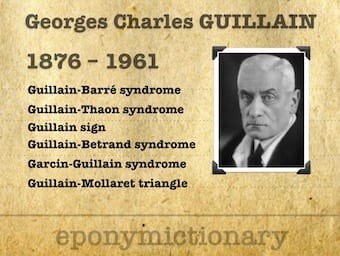
Georges Guillain
Georges Charles Guillain (1876-1961) was a French neurologist. Multiple neurology-related eponyms including Guillain-Barré syndrome

Georges Charles Guillain (1876-1961) was a French neurologist. Multiple neurology-related eponyms including Guillain-Barré syndrome

Woldemar Mobitz (1889-1951) was a Russian-German physician. Applied mathematical approach to arrhythmias 1924 Mobitz Type I and II AV Block
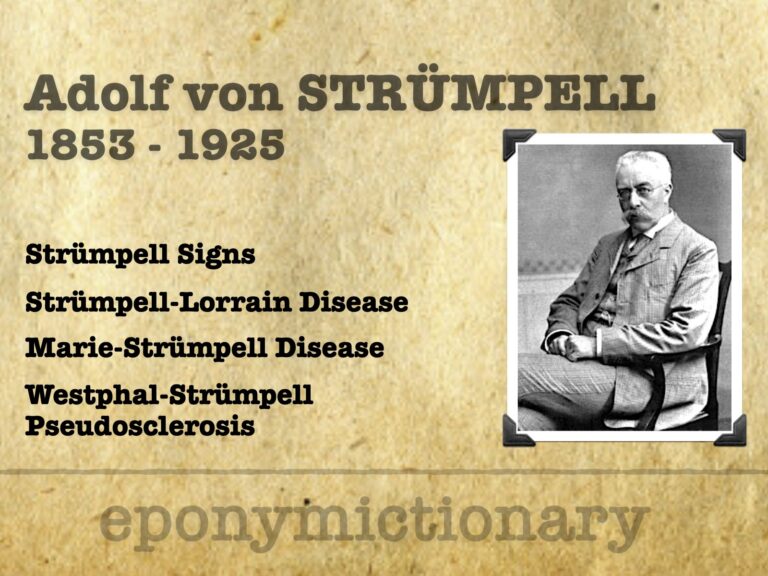
Ernst Adolf Gustav Gottfried von Strümpell (1853-1925) was a German neurologist. Strümpell signs, Strümpell-Lorrain disease, Marie-Strümpell disease and Westphal-Strümpell pseudosclerosis.

William Henry Battle (1855–1936) English surgeon. Battle incision, Battle operation and Battle sign postauricular (mastoid) ecchymosis
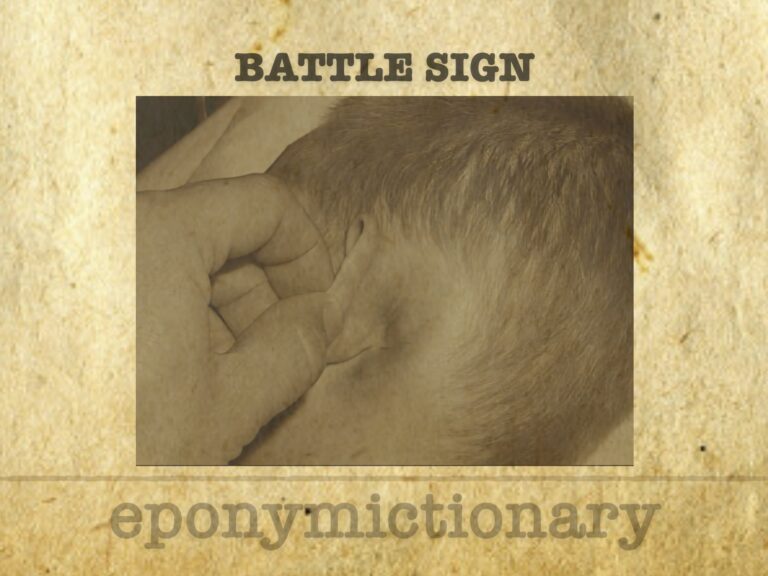
Battle sign: mastoid ecchymosis indicating basilar skull fracture, described by W.H. Battle in 1890; it holds >75% PPV for posterior fossa injury.

Carl Gerhardt (1833–1902), German internist and paediatric pioneer, described Gerhardt’s sign and advanced diagnostics, paediatrics, and laryngology

Eugen Julius Karl Paul Alfred Stieda (1869 – 1945) was a German Surgeon. Eponym: The Stieda fracture, Stieda tubercle and Pellegrini-Stieda disease (1908)
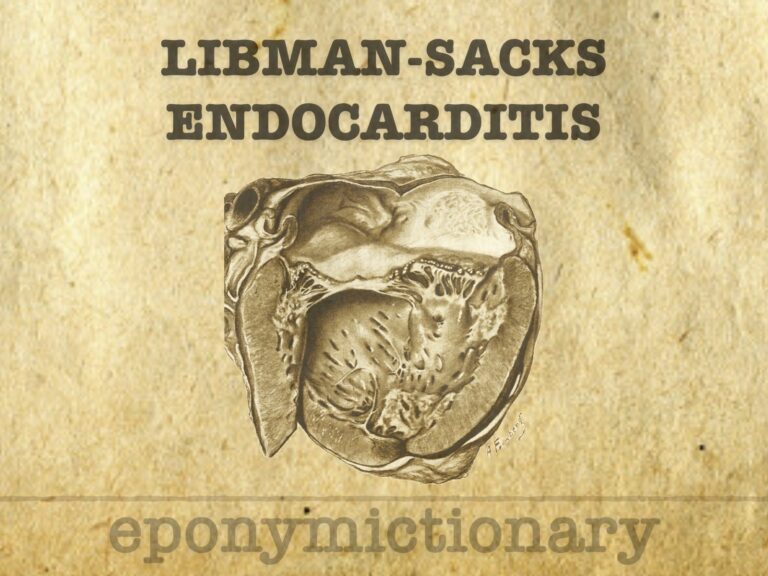
Libman–Sacks endocarditis is a sterile cardiac valve lesion linked to lupus and antiphospholipid syndrome, often detected via echocardiography

Benjamin Sacks (1896–1971), cardiac pathologist and co-describer of Libman–Sacks endocarditis, also a Hollywood advisor and Arizona frontier historian.
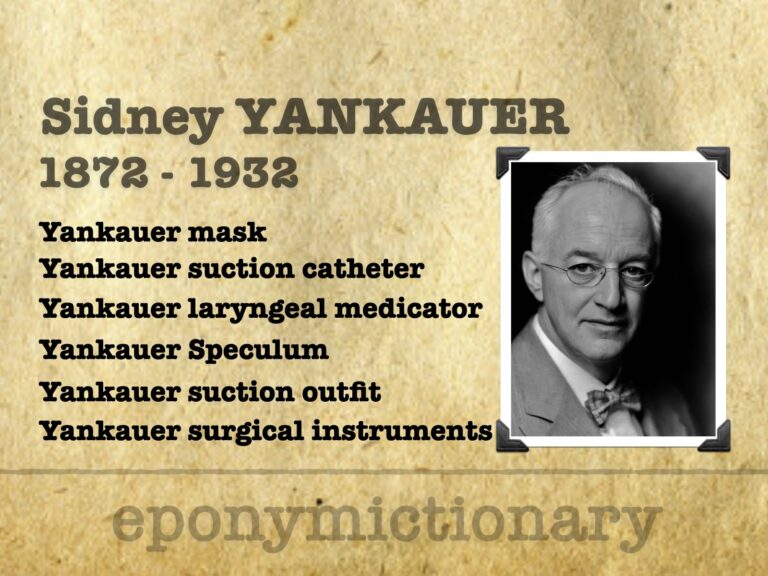
Sidney Yankauer (1872–1932), American ENT surgeon and inventor of the Yankauer suction catheter, pioneer in bronchoscopy and surgical airway care
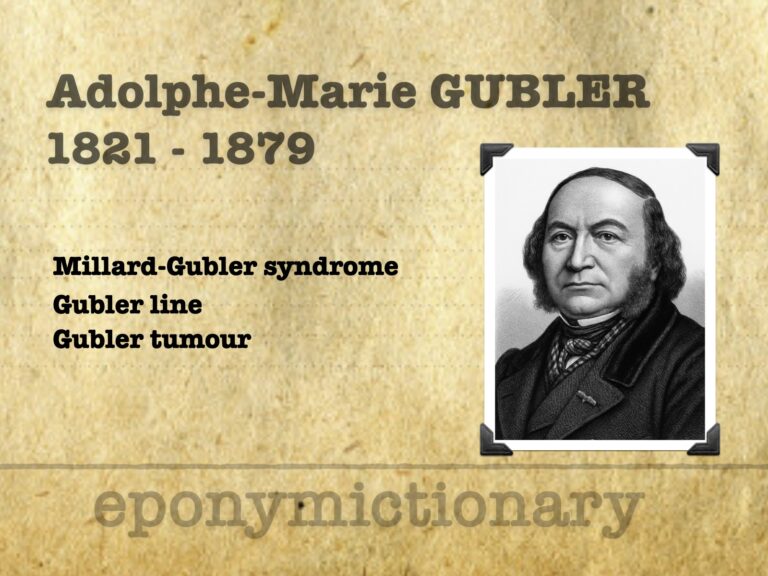
Adolphe-Marie Gubler (1821-1879) was a French physician and therapeutic pharmacologist. Millard-Gubler syndrome (1856)
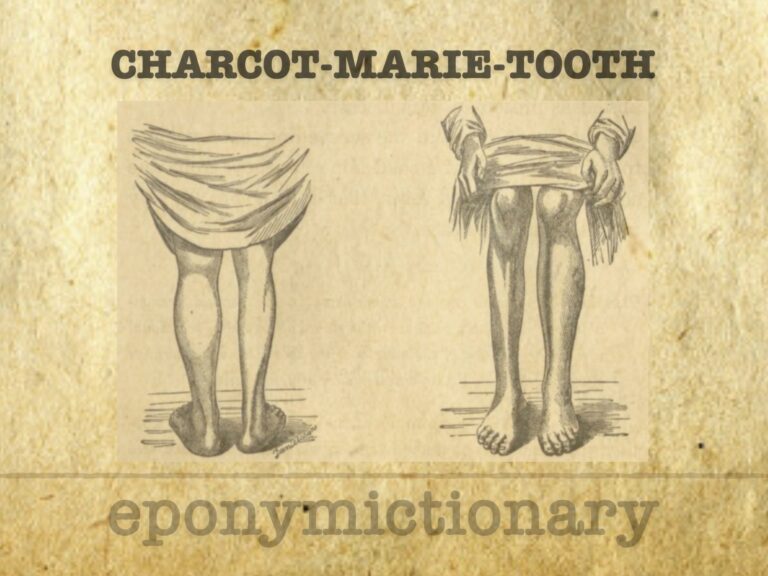
Charcot–Marie–Tooth disease (CMT) is the most common inherited neuropathy, encompassing genetically diverse subtypes of peripheral nerve dysfunction.